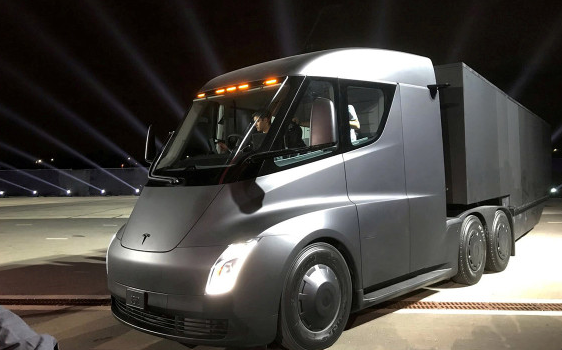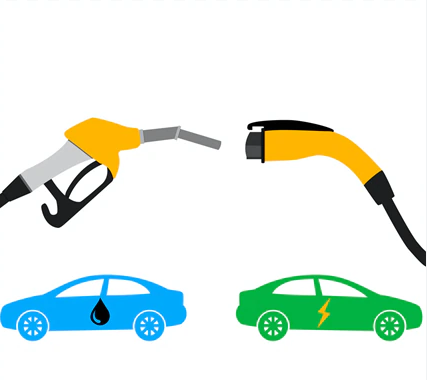How environmentally friendly are electric moving trucks compared to fuel trucks?

Electric trucks are one of the transport trends of the future. They are significantly more environmentally friendly than conventional vehicles and can even move autonomously. Companies have been working on relevant projects for a long time, and the first prototypes are already running on the roads. They have many advantages: they are powerful, quiet and energy-efficient, and can be used where minimal emissions and noise are top priorities.
However, depending on the location, the intensity of the load and the work that needs to be done, each type of transport has its advantages and disadvantages, opportunities and limitations. But the future is in electric motors. This trend is supported by almost all automakers, including those specializing in trucks.
Emission-free truck projects
Trucks contribute over 25% of CO2 emissions and if nothing is done, these will rise to 40% by 2030. The European Federation of Transport and Environment has concluded that only a complete decarbonization of trucks can remedy the situation – it must be achieved by 2050 and will require a total switch to zero-emission trucks. This project seeks to bring national and global decision makers to the attention of the world and present changes to the global community’s transition to clean trucking.
Previous efforts have focused on improving the efficiency of conventional vehicles with internal combustion engines. The focus of the new project is electric vehicles:
- Evaluating technical options in terms of feasibility, cost effectiveness, infrastructure costs, and environmental compatibility;
- Raising awareness among decision makers and the auto industry of the need to fully decarbonize trucks;
- Advocating for changes to accelerate the development of green trucks and large-scale infrastructure investments;
- Revising road tolls with 75% discounts for clean trucks and a revamped certification process.
Technical solutions already exist and are ready to enter the market (Mercedes, MAN, Tesla with electric modules, Toyota with hydrogen, Siemens-Scania with power from the contact grid). However, it is also possible to do without new developments that require enormous capital investments. According to research by experts from the American company Motiv Power Systems, over 70% of commercial trucks, vans, buses, garbage trucks, fire-fighting vehicles, and even tractor units manufactured today can become electrically driven without too much difficulty.
New logistics concepts
Tougher standards, regulations and incentives are necessary steps to reduce pollution from heavy trucks. In addition, new logistics solutions are being considered. Among the most promising is “Silent Night Logistics for Urban Centers” (GeNaLog, Fraunhofer Institute for Material Flow and Logistics), which shifts some freight traffic during off-peak periods by using electric trucks and helps reduce local emissions. The “Smart City Loop” project also drew a great deal of public attention – goods can be delivered to the outskirts of the city by semi-autonomous electric trucks, and then transported within the city using smaller electric vehicles or, alternatively, underground, through pipelines. The system can also be used vice versa – for example, to deliver containers, returns, etc. to the outskirts.
Features of electric trucks compared to fuel trucks.
Typical tasks of conventional and electric trucks are similar – covering short/long routes, transporting goods and loading/unloading at start and end points. But electric-powered vehicles have limited capabilities, and there are many nuances to consider, such as
- What distances must be covered during operation?
- What is the maximum weight of the load to be handled and moved?
- How fast should the truck do it?
- In what weather and temperature conditions will it have to work?
The result of assessing the merits of an electric truck depends on many factors. Cold, for example, significantly reduces battery performance, and heated seats or exterior mirrors eat up electricity and reduce range. Aggressive driving and heat also have a negative effect. Traditional trucks have far fewer weaknesses, but they are bad for the ecological balance. Contrary to popular belief, LNG vehicles have practically no ecological advantage over diesel engines (considering that most trucks today use diesel engines – gasoline engines are much less effective in the truck industry).
An analysis conducted jointly by the Nonprofit Institute for Applied Ecology (Eko-Institut) and the International Council for Clean Transportation (ICCT) examined the environmental, climate and human impact of different types of trucks. According to the results, LNG-powered trucks emit between 969 and 1,051 grams of carbon dioxide per kilometer driven, depending on the combustion principle used. The diesel truck is not much dirtier at 1,056 grams per kilometer. In addition, the study was not limited to carbon dioxide emissions with the exhaust, but also took into account the processes of fuel extraction, refining, transportation, storage, refueling, etc.
However, electric cars cannot be considered completely “clean” either. When it comes to environmental friendliness, there are a host of harmful substances, and CO2 is just one of many aspects. “Think of methane or nitrous oxide, which are much more harmful. Or cobalt and copper, which are, among other things, central components of the flagship products of the mobile society – electric cars,” says Friedrich Schmidt-Blick, a prominent critic of electromobility. A huge amount of harmful content is hidden in batteries. According to a study by Graz University of Technology, even a small Tesla roadster requires 24 kilograms of copper, 67 kilograms of cobalt, or alternatively 69 kilograms of nickel, and about 14 kilograms of lithium – the decomposition of all these substances means a massive invasion of nature. There are many times more in heavy commercial vehicles.
“The euphoric expectations of electric trucks are completely misplaced,” summed up the 82-year-old chemist and former vice president of the Wuppertal Institute for Climate, Environment and Energy. According to him, “to extract metals you have to move a huge amount of resources, and to get 24 kg of copper you have to sacrifice eight tons of nature.” “What they call an environmental achievement is really nothing more than a show-off,” the professor is indignant. “If you want to do something for the environment, treat the cause, not the symptoms!” – he urges in his book Green Lies.
Of course, the manufacturers are not talking about it. The auto industry promotes the electric fleet as an alternative to “dirty” transportation: Mercedes advertises “cars of tomorrow,” Tesla chants: “No emissions – no compromises. But where is the truth? If what Schmidt-Blick calculates is true, then electric car makers are hiding quite a few secrets.
Electricity production affects the ecological balance
Scientists from the IFEU Institute for Energy and Environmental Research in Heidelberg have also been working on electrification of vehicles for years. They analyzed the environmental impact of conventional cars, comparing them with the environmental impact of electric cars throughout their entire life cycle – from component production and assembly to use and disposal. And they came up with some surprising results. According to their findings, the diesel car, which is usually perceived as the main polluter, now has a better carbon footprint than the gasoline-powered one, given the CO2 value without other pollutants, and the latest generation DT units are even cleaner than hybrids, where the internal combustion engine is combined with an electric motor and battery, and electric cars, which pollute nature indirectly. With the right environmental calculator, you can determine to the nearest gram how safe the various models are.
Alternative energy sources and drive forms are a wide field for experimentation. The hottest debate is between proponents of electric cars and fuel cell vehicles. Both technologies claim to be sustainable and future-oriented alternatives to the internal combustion engine. For the time being, however, electric cars are pulling ahead.

At least manufacturers are offering more appropriate models, the infrastructure is developing at a rapid pace, and buyers are being encouraged by government subsidy programs. Fuel cells, too, are being introduced everywhere, including in trucks. But such vehicles are by no means more environmentally friendly. The hydrogen they need is produced by electrolysis, which, in turn, consumes a lot of electricity (which in our country and many others usually comes from minerals – again, harm to nature). And, in fact, none of the alternative fuel drives used today is devoid of exhaust fumes – they are just not as significant as in gasoline and diesel systems.
The main problem with electric cars is the origin of the current they are charged with. More than two-thirds of it comes from the regular grid. In Europe, almost half the electricity is generated by burning lignite and hard coal, and this is the dirtiest way of generating energy, producing about 550 g of CO2 every kilowatt hour. By comparison, Switzerland gets more than half of its electricity from hydropower, and the figure drops to 120 grams. Consequently, the higher the proportion of wind, water and solar in the process, the more the electric cars benefit.
In the class of small commercial vehicles used for short-distance deliveries and utility vehicles, full electrification is already in the works in some countries. But long-distance transportation by heavy-duty, fully battery-powered vehicles is difficult because of the limited range. Current developments focus on ways to replenish electricity during a long trip. For example, contact-electric trucks capable of being recharged from overhead or ground power lines would be able to overcome the technical limitations of battery technology, but only after effective infrastructure is in place. The idea is viable, although the implementation of a contact grid is a huge logistical, economic and operational challenge.
Conclusion
The reason for the concern of road ecologists is pollution due to growing truck traffic, not least related to the growing online commerce. Nearly one-fifth of CO emissions come from commercial vehicles, many of which are used to deliver goods to residents, stores and businesses. Advanced trucking and logistics concepts can help keep the planet healthy.
Although the environmental balance of electric vehicles is not as unequivocally positive as manufacturers claim, the reputation of classic gasoline and diesel systems has been seriously undermined in recent years by a number of expert reviews and scandals. This is why many countries are looking for ways to reduce the environmental impact of transportation and promote environmentally friendly alternatives. From this perspective, electric trucks are not ideal, but a promising innovation with great potential.